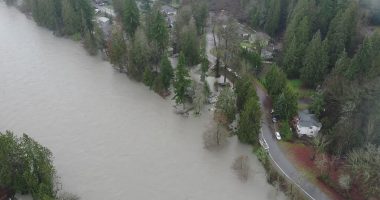
WASHINGTON—The world economy is gearing up for a strong recovery from the pandemic in 2021 after shrinking considerably less than initially feared last year, the International Monetary Fund said Tuesday, though it warned that the outlook is subject to exceptional uncertainty.
Global output is projected to grow 5.5% this year, up from the IMF’s October forecast of a 5.2% increase. Last year’s estimated contraction of 3.5% was smaller than October’s forecast for a 4.4% contraction. China was the only major economy to grow last year, expanding by 2.3% amid effective containment measures and forceful economic support, the IMF said.
The outlook has been buoyed by hopes for increasing vaccination and improved therapies to combat Covid-19, which sparked widespread economic lockdowns last year. It assumes “broad vaccine availability in advanced economies and some emerging market economies in summer 2021 and across most countries by the second half of 2022,” the IMF said. That is faster than the multilateral lender expected when it published its previous set of forecasts in October.
Continued government spending measures in Japan and the U.S., where Congress authorized a $900 billion package in late December, contributed to the improved forecasts. The IMF expects the U.S. economy to grow 5.1% this year and Japan’s to expand by 3.1%. However, it lowered its forecast for the euro area to 4.2% growth from 5.2%. The IMF is the global lender of last resort to countries in distress.
The stronger-than-expected recovery masks significant disparities between high-skilled workers and their less-educated counterparts, the IMF’s chief economist, Gita Gopinath, said in a December interview. Similarly, rich countries are faring better than poor ones as the global pandemic nears its first anniversary.
Low inflation in the U.S., Europe and Japan has allowed central banks and governments in those regions to inject trillions of dollars of fiscal and monetary stimulus. Their diversified, technologically advanced and service-oriented economies adapted more smoothly to remote work while suffering relatively less from the shocks to tourism or commodity prices.
U.S. gross domestic product by the end of 2022 is expected to be less than 1.5% below its projected level before the pandemic, the IMF said. That gap is expected to be 8% in Asia’s developing economies—excluding China—and nearly 7% in Latin America and the Caribbean.
In developing countries where neither debt sustainability nor inflation are pressing concerns, the IMF urged policy makers to maintain fiscal and monetary stimulus. But for the poorest nations, many of which had high debt even before the pandemic, “support from the international community through grants, concessional loans, and debt relief will be essential to ensure that these countries are not overwhelmed by crisis costs and rising poverty,” the IMF said.
The lender noted that some 90 million people globally are expected to fall into extreme poverty in 2020-21, wiping out “progress made in poverty reduction across the past two decades.”
Write to Paul Kiernan at [email protected]
Copyright ©2020 Dow Jones & Company, Inc. All Rights Reserved. 87990cbe856818d5eddac44c7b1cdeb8









